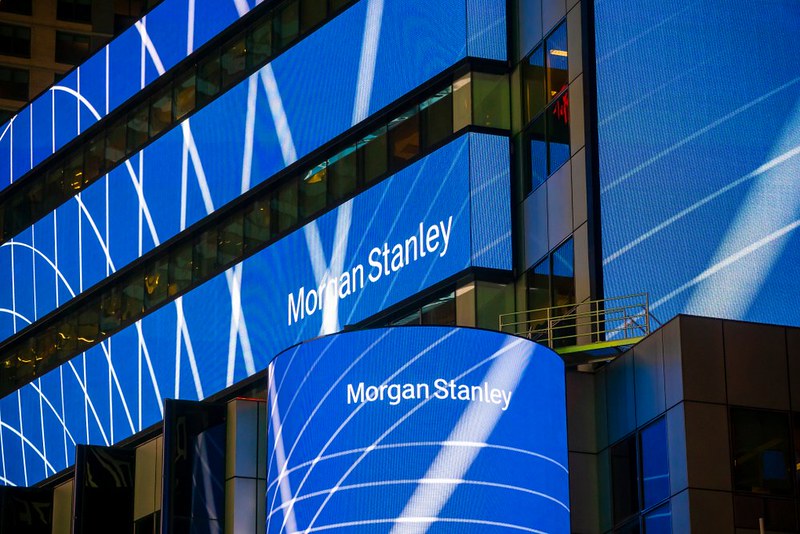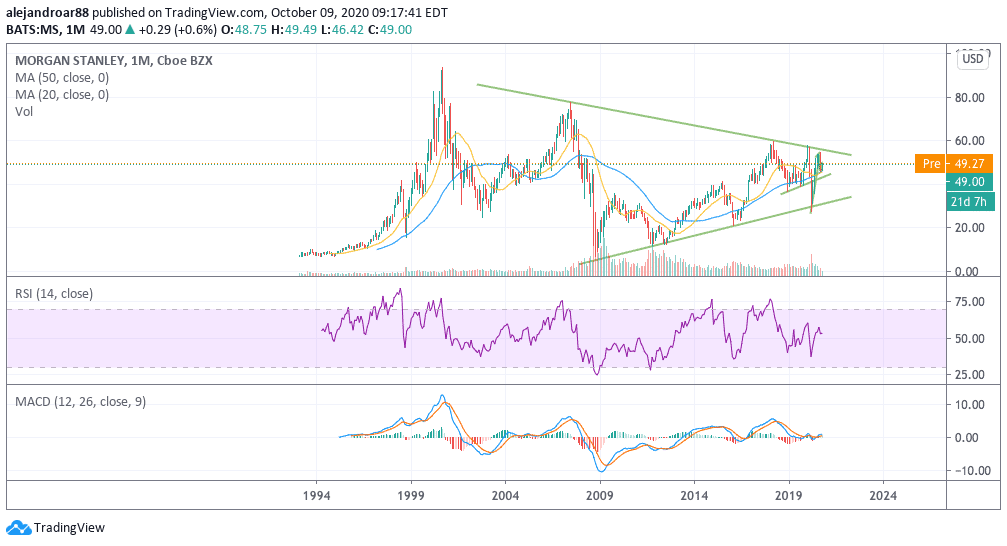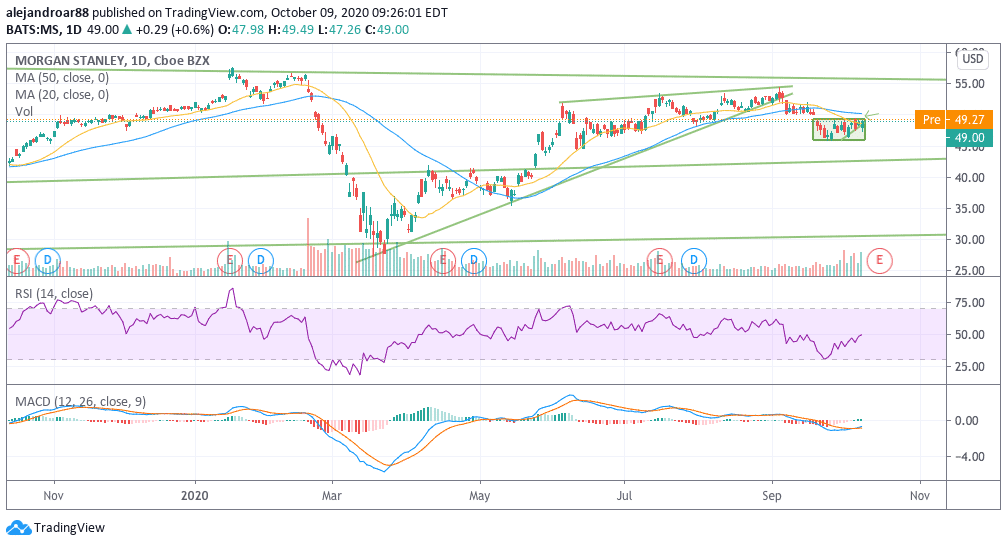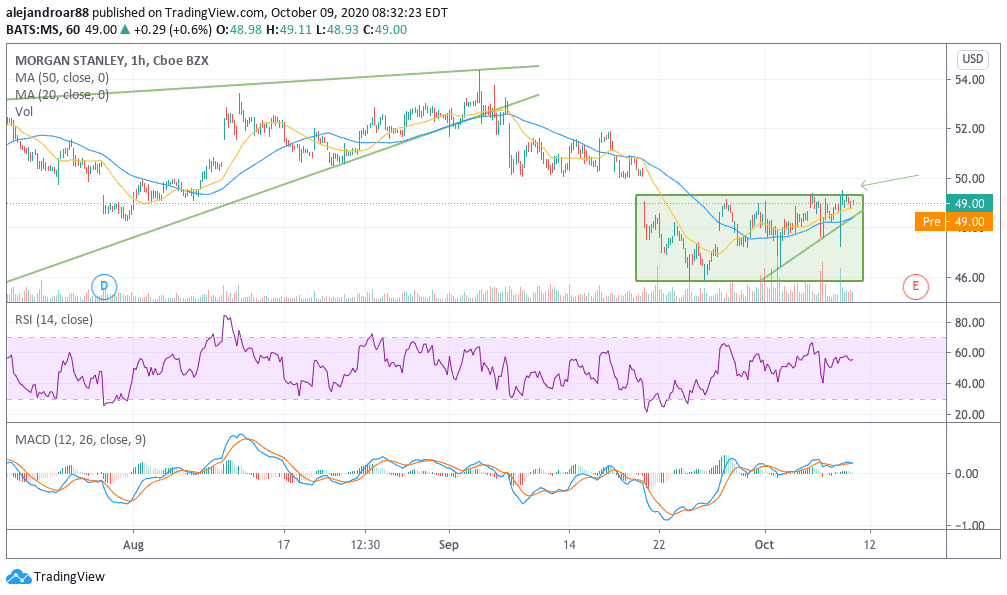
Morgan Stanley shares are trading just 0.9% higher at $49.5 this morning in early stock trading activity in New York, but its acquisition of US investment management firm Eaton Vance (EV) could serve as the catalyst to push the investment bank stock higher after a few days of consolidation.
The acquisition is part of the investment bank’s strategy to increase its reliance on its wealth management business segment to generate revenue growth, as the financial crisis of 2007-2008 introduced stricter regulations to its trading activities – which had a negative impact on the firm’s top-line.
The deal entitles Eaton Vance shareholders to receive $28.25 per share in cash along with a 0.5833 portion of a Morgan Stanley share, which values the business at a 38% premium compared to its Wednesday closing price of $41 per share. Shares of Eaton Vance jumped 48% yesterday after the news at $60.65 per share.
A report from the New York Times released this morning highlighted that Eaton Vance’s acquisition had already been cooking for many months but the bank had to delay it as it had not yet closed the purchase of online broker E*Trade, an acquisition made in February this year.
The deal will immediately increase the amount of assets managed by Morgan Stanley to $1.2 trillion, with revenues from the asset management segment growing to $5 billion per year.
Morgan Stanley’s Chief Executive James Gorman – former head of the firm’s global wealth management unit – sees this move as one that could ramp up the valuation multiples analysts have assigned to the bank since revenues from this segment are much more predictable than those of other areas of the business like investment banking.
A move from the current multiple of 10 assigned to Morgan Stanley shares to 15 or even to 20 – similar to those seen by US asset management giants like Charles Schwab or Blackrock could result in a huge upside for the stock, which is where the potential opportunity is for investors at the moment.
Gorman’s strategy still faces significant challenges
Achieving growth through acquisitions is not as easy as it seems, especially when the acquiring company relies on the positive synergies resulting from the deals to deliver a big portion of the upside – as is the case for Morgan’s latest purchases.
In this regard, Gorman has stated that the firm will now focus on the adequate incorporation of these newly-acquired businesses into the bank’s platform and culture.
Moreover, active investment management has been under pressure lately as investors continue to rely on low-cost passive management solutions like robo-advisors and index funds.
These challenges remain a concern for MS analysts, who would probably prefer to wait and see if those positive prospects will ultimately materialize before pushing their price targets and recommendations higher.
What’s next for Morgan Stanley shares?

Morgan Stanley shares have been consolidating lower since the financial crisis, with the price range tightening progressively as the stock keeps making a series of lower highs and higher lows.
This consolidation process seems to indicate that the bank’s underlying business is becoming much more stable and predictable due to this shift towards investment management, a situation that would present an opportunity for investors if Wall Street were to change its perception of the firm over the next few months or years.

The 1-day chart shows that Morgan Stanley shares topped before reaching the upper trend line of the long-dated symmetrical triangle shown in the monthly chart, with the stock moving down from $54.5 to $46 in a couple of weeks.

On the other hand, the price action from the past few days appears to be forming a sideways consolidation pattern, with the 1-hour chart showing an uptrend within these boxed movements that could end up breaking that price channel if momentum keeps building up in favor of the investment bank following these latest acquisitions.
A break above the $50 level, which would successfully fill the price gap seen in the hourly chart, could provide confirmation of this bullish move, with a plausible first target at $55 per share – a retest of the 2007-2020 upper trend line.

Question & Answers (0)